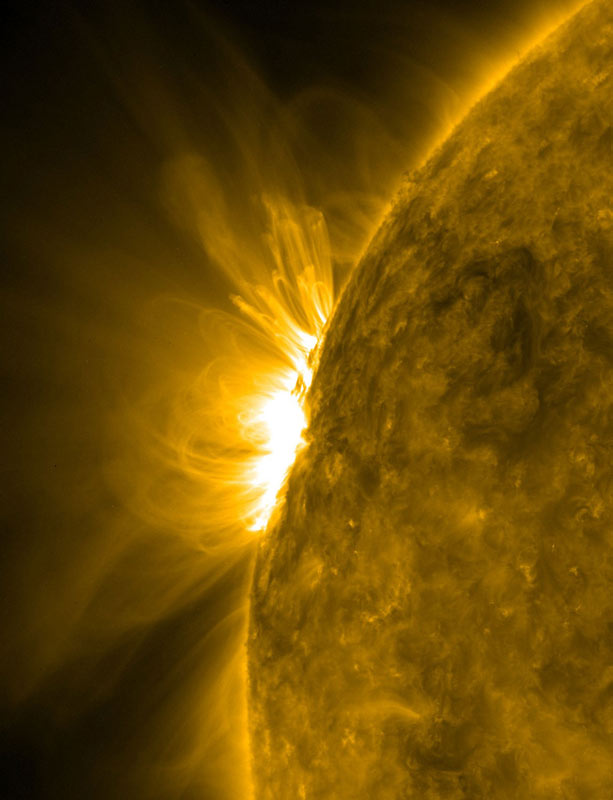Sun's Magnetic Waves Show Surprising Heating Power

Unexpectedly powerful magnetic waves could help explain the super-hot nature of the sun's outer shell, researchers say.
The sun's outermost layer, or corona, can reach temperatures as high as 3.5 million degrees Fahrenheit (2 million degrees Celsius), more than 20 times hotter than its surface, and blast out a wind of electrically charged particles traveling at hundreds of miles per second. All this activity requires energy, but what provides the energy has been a mystery.
Magnetic waves known as Alfvén waves from the cool lower solar atmosphere had long been proposed as the source, but there had been scant evidence that such waves were powerful and abundant enough to power the corona. [Amazing Sun Photos from Space]
Now an international team of scientists has discovered these waves may be far more profuse and up to more than 100 times stronger than before seen, potentially delivering about 10,000 times more energy overall to the corona than ever detected.
Using NASA's Solar Dynamics Observatory satellite to image structures and motions on the sun with about 540-mile (870-kilometer) resolution every 12 seconds, the scientists detected these magnetic waves throughout the corona. Their calculations suggest the Alfvén waves are capable of driving the solar wind and heating much of the corona.
"These waves really do have sufficient energy to power a substantial fraction of the sun's atmosphere," study co-author Scott McIntosh, a solar physicist at the National Center for Atmospheric Research in Boulder, Colo., told SPACE.com.
It remains uncertain how the magnetic waves on the sun transfer their energy to the matter in the corona to heat or accelerate it. In addition, the waves the researchers observed did not appear sufficient to account for the intense emissions of radiation from more-energetic regions of the corona. "We have work left to do with active regions," McIntosh said.
Breaking space news, the latest updates on rocket launches, skywatching events and more!
The scientists detailed their findings in the July 28 issue of the journal Nature.
Follow SPACE.com contributor Charles Q. Choi on Twitter @cqchoi. Visit SPACE.com for the latest in space science and exploration news on Twitter @Spacedotcom and onFacebook.

Charles Q. Choi is a contributing writer for Space.com and Live Science. He covers all things human origins and astronomy as well as physics, animals and general science topics. Charles has a Master of Arts degree from the University of Missouri-Columbia, School of Journalism and a Bachelor of Arts degree from the University of South Florida. Charles has visited every continent on Earth, drinking rancid yak butter tea in Lhasa, snorkeling with sea lions in the Galapagos and even climbing an iceberg in Antarctica. Visit him at http://www.sciwriter.us
